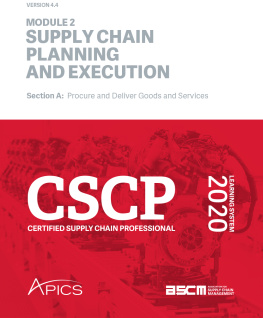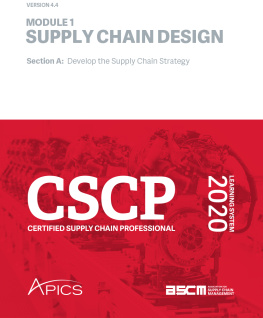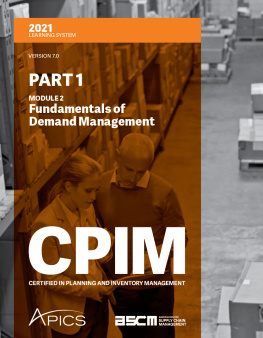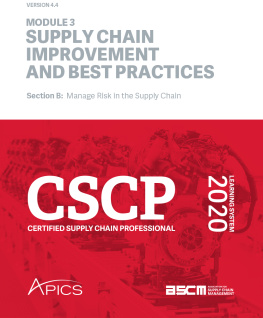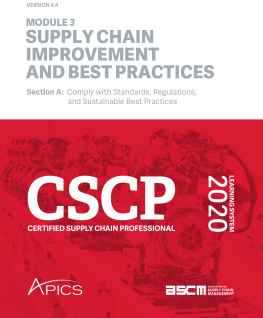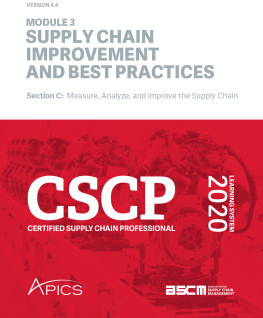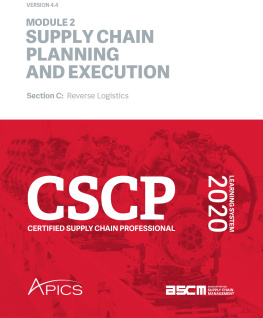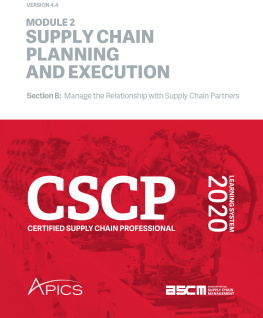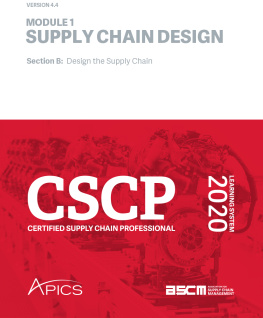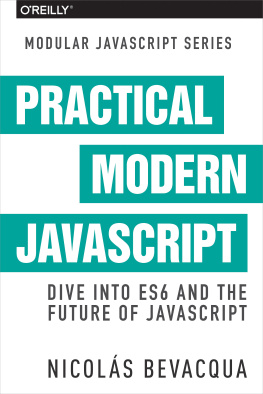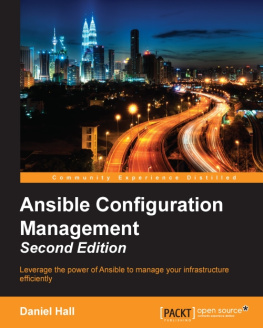APICS - CSCP 2020 Module 2 Section A
Here you can read online APICS - CSCP 2020 Module 2 Section A full text of the book (entire story) in english for free. Download pdf and epub, get meaning, cover and reviews about this ebook. genre: Business. Description of the work, (preface) as well as reviews are available. Best literature library LitArk.com created for fans of good reading and offers a wide selection of genres:
Romance novel
Science fiction
Adventure
Detective
Science
History
Home and family
Prose
Art
Politics
Computer
Non-fiction
Religion
Business
Children
Humor
Choose a favorite category and find really read worthwhile books. Enjoy immersion in the world of imagination, feel the emotions of the characters or learn something new for yourself, make an fascinating discovery.
- Book:CSCP 2020 Module 2 Section A
- Author:
- Genre:
- Rating:4 / 5
- Favourites:Add to favourites
- Your mark:
- 80
- 1
- 2
- 3
- 4
- 5
CSCP 2020 Module 2 Section A: summary, description and annotation
We offer to read an annotation, description, summary or preface (depends on what the author of the book "CSCP 2020 Module 2 Section A" wrote himself). If you haven't found the necessary information about the book — write in the comments, we will try to find it.
CSCP 2020 Module 2 Section A — read online for free the complete book (whole text) full work
Below is the text of the book, divided by pages. System saving the place of the last page read, allows you to conveniently read the book "CSCP 2020 Module 2 Section A" online for free, without having to search again every time where you left off. Put a bookmark, and you can go to the page where you finished reading at any time.
Font size:
Interval:
Bookmark:
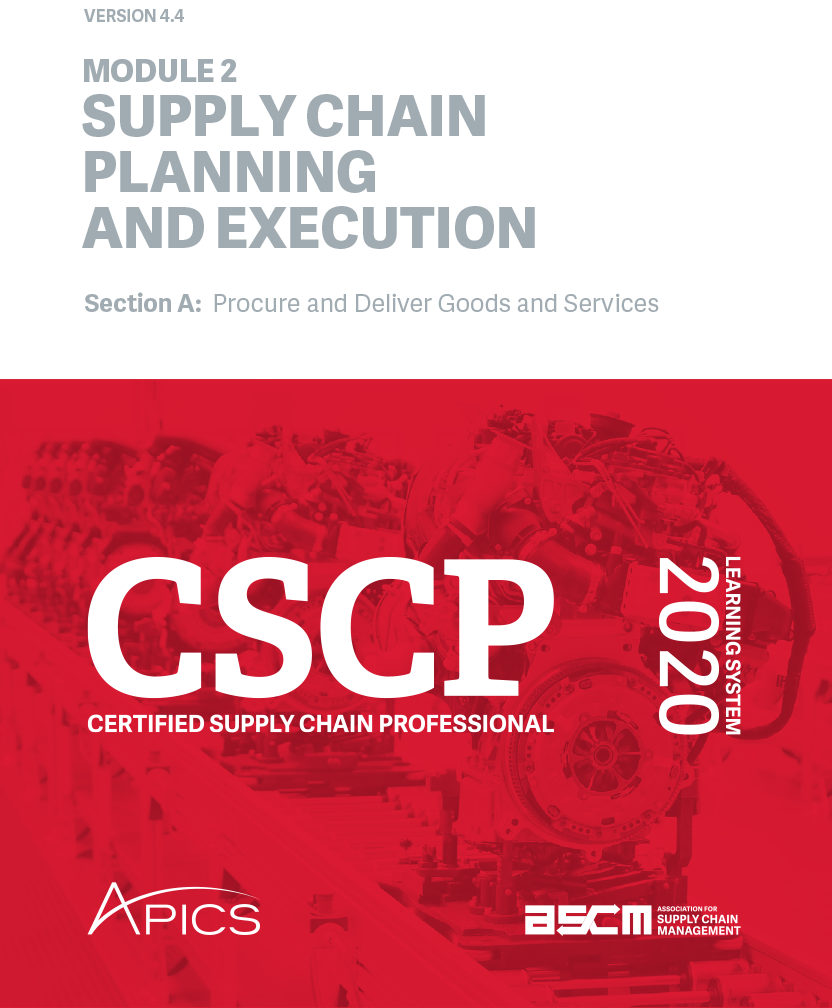
This section covers concepts that help supply chain managers enable long- and short-term demand, supply, and financial planning so that sourcing, acquisition, manufacturing control, delivery, invoicing, and payment form a smooth and fast cycle. Demand needs to be planned (and forecasted), communicated, influenced, and prioritized. Operations planning and control then links supply with demand. Inventory management methodologies need to be selected and supply analyzed using tools such as total cost of ownership or make-versus-buy analysis. Logistics, including warehouse management, capacity forecasting, materials handling, transportation, and delivery patterns are also discussed. The section also includes tips on how to take advantage of free trade zones and trading blocs through an understanding of foreign exchange, the cash-to-cash-cycle, and Incoterms trade terms.
The key processes that supply chain managers need to be able to perform related to procuring and delivering goods and services are
Performing sales and operations planning
Developing supply chain personnels knowledge, skills, and abilities
Developing supply chain infrastructure
Performing short-term planning and scheduling
Identifying logistical requirements
Developing logistical capabilities to support delivery of goods and services
Executing the plans.
The following is a general overview of these processes. The information required to plan and execute these processes is presented in this sections chapters.
The process of performing sales and operations planning (S&OP) involves the following steps:
Reviewing performance
Evaluating demand levels
Evaluating supply capability
Reconciling demand, supply, and financial plans
The process of developing supply chain personnels knowledge, skills, and abilities involves the following steps:
Setting learning goals with ones manager
Providing opportunities for independent learning, including certification
Developing formal or informal coaching or mentoring programs
Providing access to training courses as needed for specific skills or industry-specific knowledge
Meeting periodically to assess goal progress and set new goals
Providing an upward career path for individuals who excel
The process of developing the supply chain infrastructure involves the following steps:
Completing design of the supply chain infrastructure, including relevant total cost of ownership and make-versus-buy analyses
For all make decisions:
Completing supply chain infrastructure or process development projects for manufacturing or service delivery, logistics (including warehousing and transportation), and information and funds flows
Staffing new roles
Providing training on new processes or systems
Using change management to ensure that processes and systems are fully adopted in policies and culture (See Module 3 for information on change management.)
For all buy decisions and key customer relationships:
Working toward desired supplier and customer relationships
Developing supplier and customer contracts
Implementing agreed-upon supplier and customer relationships
The process of performing short-term planning and scheduling involves the following steps:
Planning, communicating, influencing, and managing and prioritizing demand
Forecasting demand
Servicing orders
Prioritizing demand
Influencing other business functions toward a shared view of demand management
Performing master planning, including the above demand management activities, resource planning, and master scheduling
Performing sales and operations planning to develop a consensus plan as an input to master scheduling
Performing master scheduling to produce the master schedule and rough-cut capacity plan
Performing material requirements planning
Performing distribution requirements planning for inventory
Planning production capacity
Planning inventory
Forecasting and planning warehouse and transportation capacity
The process of identifying logistical requirements involves the following steps:
Determining logistics objectives and considerations
Determining warehousing objectives and considerations
Specifying warehouse capacity requirements
Specifying materials-handling requirements
Determining transportation objectives and considerations
Selecting preferred modes of transport
Balancing warehousing, transportation, and other logistics requirements
The process of developing logistical capabilities to support delivery of goods and services involves the following steps:
For all make decisions:
Completing projects related to logistics, including warehousing and transportation processes, infrastructure, and equipment
Staffing new roles
Performing training on new processes, infrastructure, and equipment
Using change management to ensure that logistical capabilities are incorporated in policy and culture
For all buy decisions:
Selecting logistics service providers
Developing contracts with logistics service providers
The process of executing the plans involves the following steps:
Performing production activity control
Measuring, managing, and controlling capacity
Controlling inventory
Monitoring and controlling delivery patterns and transportation modes
Monitoring and controlling third-party service providers
Expediting supply and transportation processes
Complying with all legal and regulatory requirements
This chapter is designed to
Define demand
Define demand management
Describe the components of demand management: planning, communicating, influencing.
This chapter first describes the demand management process. Then it describes ways to manage this demand dynamically by coordinating activities between key internal areas of the organization and with the extended supply chain.
Demand is defined in the APICS Dictionary, 16th edition, as
a need for a particular product or component. The demand could come from any number of sources (e.g., a customer order or forecast, an interplant requirement, a branch warehouse request for a service part or the manufacturing of another product).
Font size:
Interval:
Bookmark:
Similar books «CSCP 2020 Module 2 Section A»
Look at similar books to CSCP 2020 Module 2 Section A. We have selected literature similar in name and meaning in the hope of providing readers with more options to find new, interesting, not yet read works.
Discussion, reviews of the book CSCP 2020 Module 2 Section A and just readers' own opinions. Leave your comments, write what you think about the work, its meaning or the main characters. Specify what exactly you liked and what you didn't like, and why you think so.

